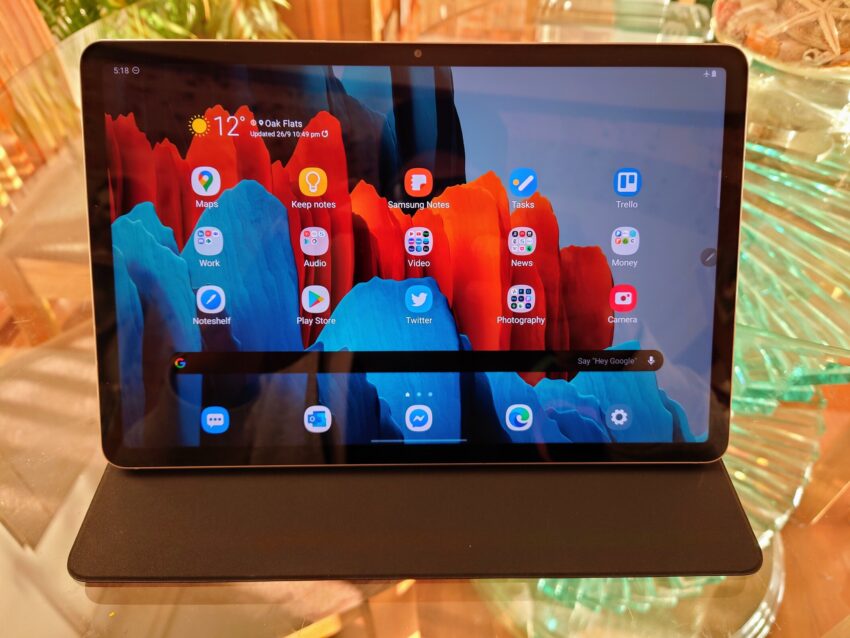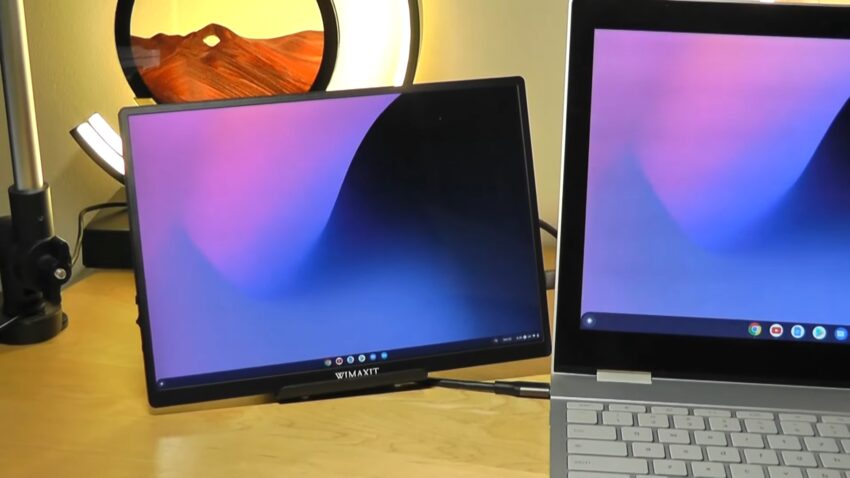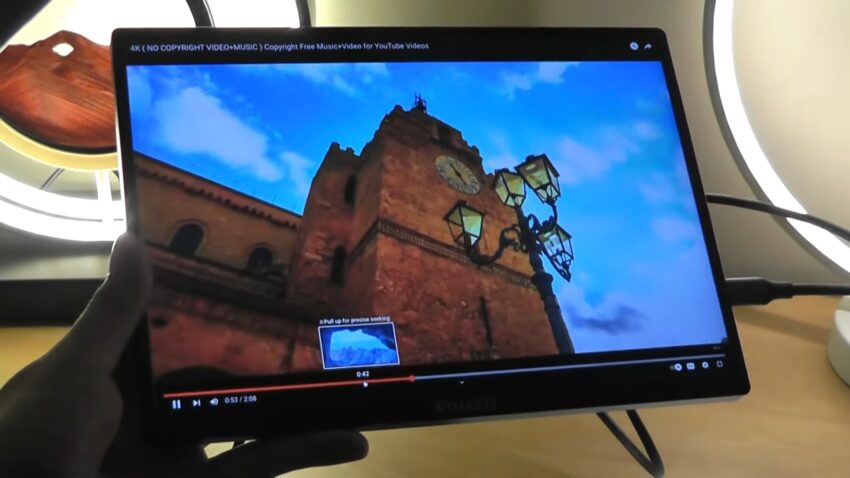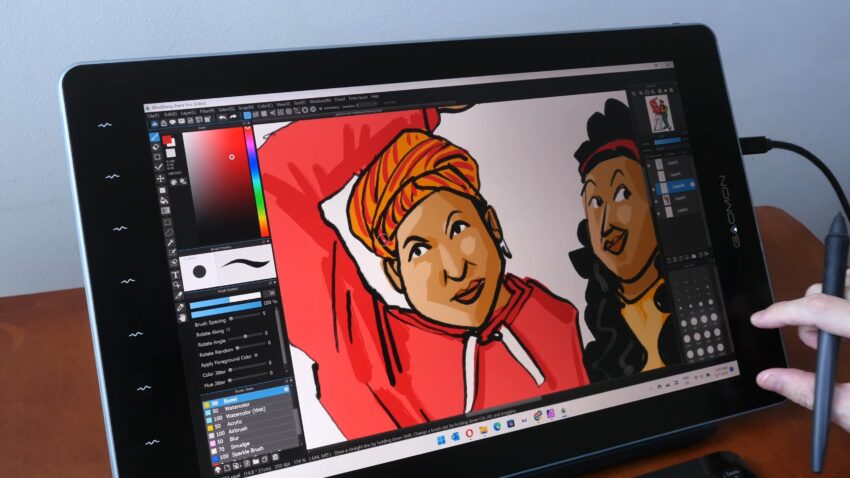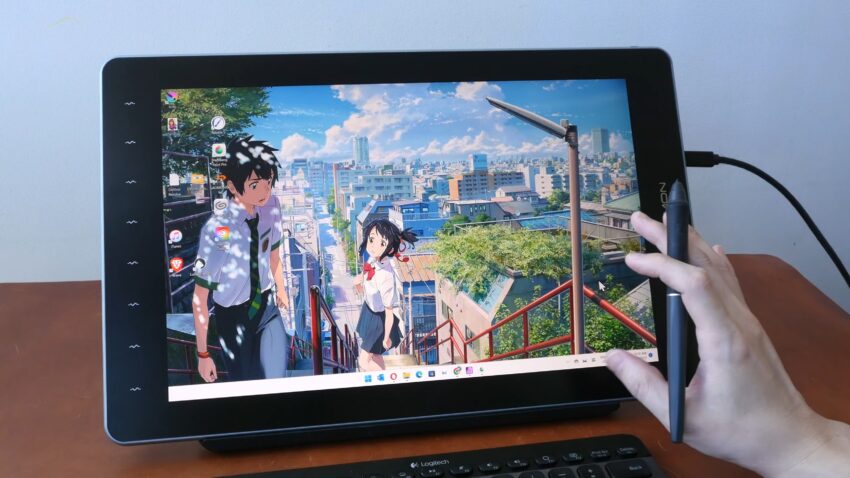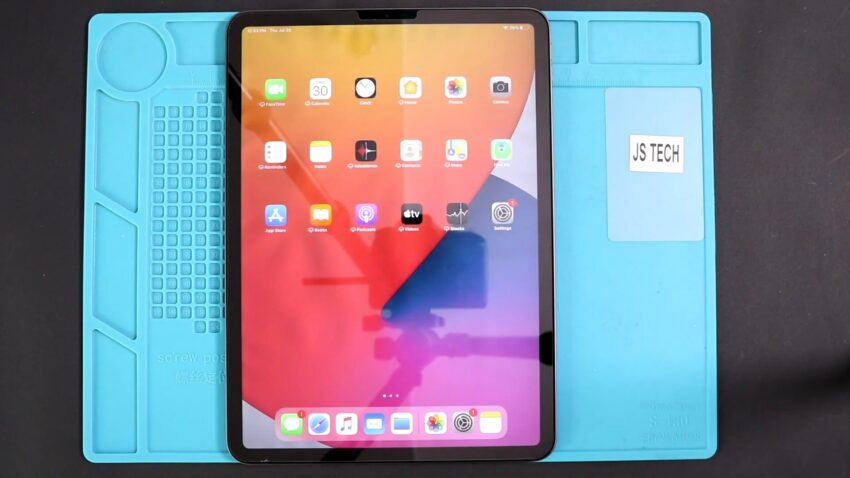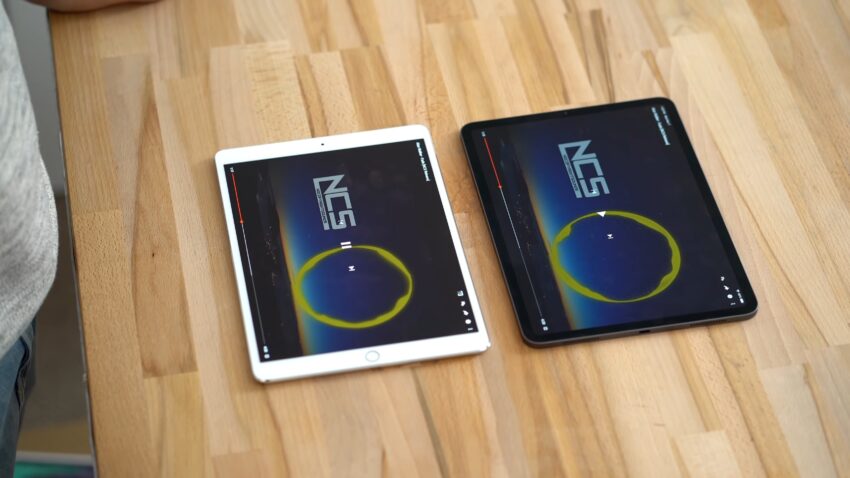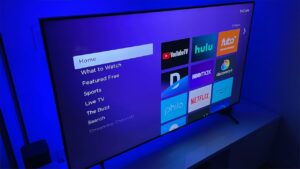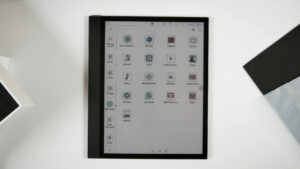The evolution of display technology has led to the production of varying screen sizes and aspect ratios, each presenting a unique viewing experience. In the realm of tablets and small devices, a slight difference in display dimensions and proportions can significantly impact usability, quality, and overall user satisfaction.
This article explores the distinctions and advantages of the 10.5-inch 5×3 and the 11-inch 16×10 display, discussing aspects like resolution, aspect ratio, and user experience. We’ll navigate through the specs and insights to discern which one is more accommodating for diverse needs.
10.5 Inch 5×3 Display
The 10.5-inch 5×3 display is renowned for its distinctive proportions, making it a preferred choice for various applications. It provides an expansive, well-balanced view and is prominent in several tablets and small devices, utilized for both professional and entertainment purposes.
Aspect Ratio & Resolution
The 10.5-inch display with a 5×3 aspect ratio provides an equitable balance between width and height, making it versatile for various applications. The aspect ratio is crucial as it influences the screen real estate, affecting how content is viewed, be it images, videos, or text documents.
This aspect ratio is adept at displaying content in a manner that’s coherent and extensive, diminishing the need for excessive scrolling or zooming. Additionally, the resolution of this display is substantial, ensuring crisp and clear visuals and optimizing the user’s viewing experience, whether they are reading, gaming, or watching videos.
Usability & User Experience
Given its balanced proportions, the 10.5-inch 5×3 display stands out in usability. The width and height present in this display are conducive to both portrait and landscape orientations, allowing for flexibility in use.
- Portrait Mode: Ideal for reading e-books and browsing websites, providing an extensive vertical view.
- Landscape Mode: Suitable for watching videos and gaming, offering a wide, immersive experience.
The accommodating aspect ratio ensures that whether you’re sketching, note-taking, or just browsing, the user experience remains optimal and versatile, making multitasking and navigation incredibly efficient and enjoyable.
Application
With its balanced aspect ratio and expansive view, the 10.5-inch 5×3 display finds application across various domains, from professional use to entertainment. In the professional realm, this display is ideal for managing documents and multitasking, offering enough screen real estate to comfortably view content side by side.
For artists and designers, the display provides a substantial canvas for sketching and designing, with balanced proportions aiding in the accurate representation of images and designs. In terms of entertainment, this display is adept at video playback and gaming, with the expansive screen providing immersive visuals.
Whether it’s streaming your favorite shows or playing high-definition games, the 10.5-inch 5×3 display offers a satisfying and comprehensive experience.
11 Inch 16×10 Display
The 11-inch 16×10 display, with its elongated aspect ratio, offers an immersive and extensive viewing area. It’s prevalent in modern tablets and devices, favored for its adaptability and enhanced horizontal view, making it suitable for a variety of multimedia applications.
Aspect Ratio & Resolution
The 11-inch 16×10 display features a wider aspect ratio, lending itself to an enriched viewing experience, particularly when in landscape mode. This extended width is beneficial for multimedia consumption, like watching movies and playing games, where the wider screen can show more content.
This display boasts a high resolution, rendering images and text with precision and clarity. Whether you are viewing high-definition videos or intricate graphical content, the 11-inch variation ensures that every detail is captured, providing an enriched, vibrant visual experience.
Usability & User Experience
The usability of the 11-inch 16×10 display is characterized by its enhanced width, providing an expansive view in landscape mode, which is particularly beneficial for multitasking and multimedia consumption.
- Portrait Mode: Provides a longer vertical view, suitable for reading and web browsing.
- Landscape Mode: Offers an extended horizontal view, ideal for movies, games, and multitasking.
The immersive experience rendered by this display is particularly appealing to those who consume a lot of visual content. The larger screen real estate allows for comfortable viewing and interaction, making it a favorite among users who prioritize multimedia consumption and productivity.
Application
The 11-inch 16×10 display is versatile, finding relevance in various applications due to its extended aspect ratio and larger screen size. For professionals, this display serves as an efficient workspace, especially for those who work with multiple applications simultaneously.
The additional width allows for comfortable side-by-side placement of applications, enhancing productivity. For entertainment enthusiasts, the wider screen is a boon, allowing for immersive movie-watching and gaming experiences. The 16×10 aspect ratio is apt for modern cinematic formats, reducing the presence of black bars and utilizing the screen to its fullest potential.
Comparative Analysis
When exploring the comparative aspects of the 10.5-inch 5×3 and the 11-inch 16×10 displays, a detailed examination of their differences, similarities, and specific advantages is vital. It provides a more comprehensive understanding, allowing potential users to make informed decisions based on individual preferences and needs.
Performance and Efficiency
Evaluating the performance and efficiency of the 10.5-inch 5×3 display and the 11-inch 16×10 display reveals distinct advantages for each. The 10.5-inch 5×3 display excels in balancing performance and usability, offering a harmonious view conducive to a variety of tasks and content consumption.
In contrast, the 11-inch 16×10 display, with its extended aspect ratio, is optimized for enhanced performance in multimedia applications and multitasking. Its wider view facilitates a more detailed and enriched representation of visual content, making it a preferable choice for those whose priority is multimedia consumption and advanced productivity tasks.
Compatibility and Adaptability
In terms of compatibility and adaptability, the 10.5-inch 5×3 display offers extensive versatility due to its balanced proportions. This adaptability extends to various applications and content types, allowing users to seamlessly switch between tasks without compromising on the viewing experience.
The 11-inch 16×10 display, on the other hand, provides superior compatibility with modern multimedia formats and multitasking needs. Its elongated aspect ratio is adaptable to a plethora of applications and is particularly favored for its capability to maximize screen real estate, making it a versatile companion for professional and entertainment endeavors.
Aesthetics and Design
The aesthetic appeal and design of a display are also pivotal in user preference. The 10.5-inch 5×3 display, with its symmetrical design and balanced aspect ratio, offers a visually pleasing and harmonious appearance, making it an appealing choice for users who value aesthetics along with functionality.
The 11-inch 16×10 display, characterized by its sleek and elongated design, resonates with users who prefer modern aesthetics combined with practicality. Its contemporary design complements its functional attributes, making it a favored choice for those seeking a blend of style and utility.
User Preference and Final Thoughts
User preference is paramount when selecting between the 10.5-inch 5×3 and the 11-inch 16×10 displays. The choice ultimately hinges on the individual’s usage patterns, aesthetic preferences, and the value placed on aspects like aspect ratio, screen real estate, and adaptability.
Individual Needs and Lifestyle
Considering individual needs and lifestyles is crucial when opting for a display. Users who seek a balanced and versatile display for varied tasks and content consumption may find the 10.5-inch 5×3 display more suitable, given its equitable proportions and adaptability to different content types.
Conversely, those whose preferences lean towards extensive multimedia consumption, modern aesthetics, and advanced multitasking capabilities might find the 11-inch 16×10 display more aligned with their needs. Its wider aspect ratio and sleek design cater to a broad spectrum of applications, particularly excelling in visual content representation.
Economic Considerations and Value
Economic considerations and perceived value are also pivotal factors influencing user choice. Users need to weigh the cost against the benefits derived from each display type. Those who prioritize balanced performance and versatile application might find greater value in the 10.5-inch 5×3 display, considering its adaptability and equitable view.
However, for users who value immersive experiences, advanced productivity, and modern design, the investment in the 11-inch 16×10 display may be justified, given its superior compatibility with multimedia formats and enhanced screen real estate.
FAQs
How does the battery consumption of the 10.5-inch 5×3 display compare to the 11-inch 16×10 display?
Typically, larger and higher-resolution variations, like the 11-inch 16×10, can consume more power compared to smaller ones, potentially leading to faster battery drain. However, actual battery consumption will also depend on other factors like device optimization, screen brightness, and the types of tasks performed on the device.
Can the choice of display impact the device’s portability?
Absolutely. The 10.5-inch 5×3 variation, being slightly smaller, can be more portable and lighter compared to the 11-inch 16×10 variation. The smaller form factor can make it more convenient to carry around, especially for users who are always on the move.
Do the displays differ in their durability and resistance to damage?
Durability largely depends on the build quality of the device and the type of protective measures employed, like screen protectors and cases, rather than the display size or aspect ratio itself. However, larger displays might be more prone to damage due to a larger surface area being exposed.
Are there any noticeable differences in color reproduction between the two displays?
Color reproduction is not inherently dependent on the size or aspect ratio but rather on the technology used (like OLED or LCD) and the color calibration of the device. Both displays can offer excellent color reproduction if they employ high-quality panels and are well-calibrated.
Is one display better for outdoor use, considering glare and reflection?
The ability to use a display outdoors is more related to the screen’s brightness levels and whether it has an anti-reflective coating rather than the screen’s size or aspect ratio. A display with higher brightness and an anti-reflective coating would perform better outdoors under sunlight.
How do the two displays compare when used for reading for prolonged periods?
For prolonged reading, a display with a balanced aspect ratio, like the 10.5-inch 5×3, can be more comfortable as it provides adequate width and height, reducing the need for scrolling. However, the comfort level also significantly depends on the screen resolution, text size, and display technology, with e-ink variations being the most eye-friendly for reading.
Final Words
Choosing between the 10.5-inch 5×3 and the 11-inch 16×10 display depends largely on individual needs and preferences. The 10.5-inch offers a balanced and versatile view suitable for a range of applications, from professional tasks to multimedia consumption.
Meanwhile, the 11-inch display, with its extended width, is ideal for those who prioritize immersive multimedia experiences and efficient multitasking. In essence, the decision boils down to the user’s predominant activities and how they intend to leverage the display’s attributes.
Whether it’s the balanced proportions of the 10.5-inch variation or the extensive view of the 11-inch variation, both offer unique advantages catering to diverse user needs, ensuring an enriching and adaptable user experience.


